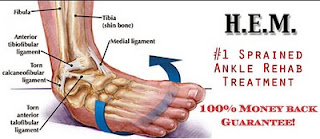However research seems limited and if you think about the claims that saturating the blood with oxygen brings back dying neurons, then if would seem logical to only expect this to work in the early hours after stroke onset.
Mayo clinics take:
http://www.mayoclinic.com/health/stroke-therapy/AN01697
Agency Research for Healthcare and Quality:
http://www.ahrq.gov/clinic/epcsums/hypoxsum.htm
Overview
Hyperbaric oxygen therapy (HBOT) is the inhalation of 100 percent oxygen inside a hyperbaric chamber that is pressurized to greater than 1 atmosphere (atm). HBOT causes both mechanical and physiologic effects by inducing a state of increased pressure and hyperoxia. HBOT is typically administered at 1 to 3 atm. While the duration of an HBOT session is typically 90 to 120 minutes, the duration, frequency, and cumulative number of sessions have not been standardized.HBOT is administered in two primary ways, using a monoplace chamber or a multiplace chamber. The monoplace chamber is the less-costly option for initial setup and operation but provides less opportunity for patient interaction while in the chamber. Multiplace chambers allow medical personnel to work in the chamber and care for acute patients to some extent. The entire multiplace chamber is pressurized, so medical personnel may require a controlled decompression, depending on how long they were exposed to the hyperbaric air environment.
The purpose of this report is to provide a guide to the strengths and limitations of the evidence about the use of HBOT to treat patients who have brain injury, cerebral palsy, and stroke. Brain injury can be caused by an external physical force (also known as traumatic brain injury, or TBI); rapid acceleration or deceleration of the head; bleeding within or around the brain; lack of sufficient oxygen to the brain; or toxic substances passing through the blood-brain barrier. Brain injury results in temporary or permanent impairment of cognitive, emotional, and/or physical functioning. Cerebral palsy refers to a motor deficit that usually manifests itself by 2 years of age and is secondary to an abnormality of at least the part of the brain that relates to motor function. Stroke refers to a sudden interruption of the blood supply to the brain, usually caused by a blocked artery or a ruptured blood vessel, leading to an interruption of homeostasis of cells, and symptoms such as loss of speech and loss of motor function.
While these conditions have different etiologies, prognostic factors, and outcomes, they also have important similarities. Each condition represents a broad spectrum, from barely perceptible or mild disabilities to devastating ones. All three are characterized by acute and chronic phases and by changes over time in the type and degree of disability. Another similarity is that the outcome of conventional treatment is often unsatisfactory. For brain injury in particular, there is a strong sense that conventional treatment has made little impact on outcomes.
Predicting the outcome of brain injury, cerebral palsy, and stroke is difficult. Prognostic instruments, such as the Glasgow Coma Scale (GCS) for brain injury, are not precise enough to reliably predict an individual patient's mortality and long-term functional status. Various prognostic criteria for the cerebral palsy patient's function have been developed over the years. For example, if a patient is not sitting independently when placed by age 2, then one can predict with approximately 95 percent confidence that he/she never will be able to walk. However, it is not possible to predict precisely when an individual patient is likely to acquire a particular ability, such as smiling, recognizing other individuals, or saying or understanding a new word.
Mortality and morbidity from a stroke are related to older age, history of myocardial infarction, cardiac arrhythmias, diabetes mellitus, and the number of stroke deficits. Functional recovery is dependent on numerous variables, including age, neurologic deficit, comorbidities, psychosocial factors, educational level, vocational status, and characteristics of the stroke survivor's environment.
The report focuses on the quality and consistency of studies reporting clinical outcomes of the use of HBOT in humans who have brain injury, cerebral palsy, or stroke. This information can be used to help providers counsel patients who use this therapy and to identify future research needs.
Findings
Brain Injury
- For traumatic brain injury, one randomized trial provided fair evidence that HBOT might reduce mortality or the duration of coma in severely injured TBI (traumatic brain injuries) patients. However, in this trial, HBOT also increased the chance of a poor functional outcome. A second fair quality randomized trial found no difference in mortality or morbidity overall, but a significant reduction in mortality in one subgroup. Therefore, they provide insufficient evidence to determine whether the benefits of HBOT outweigh the potential harms.
- The quality of the controlled trials was fair, meaning that deficiencies in the design add to uncertainty about the validity of results.
- Due to flaws in design or small size, the observational studies of HBOT in TBI do not establish a clear, consistent relationship between physiologic changes after HBOT sessions and measures of clinical improvement.
- The evidence for use of HBOT in other types of brain injury is inconclusive. No good- or fair-quality studies were found.
http://www.thehealinginstitute.net/Hyperbaric_Oxygen_Therapy.asp
General rule, ask your doctor.
